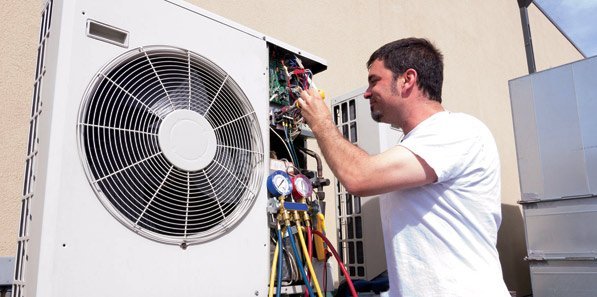New EPA Regulations Will Force Changes to HVAC Systems Over the Next Several Years

The Environmental Protection Agency (EPA) announced in 2013 that it would be proposing a phased reduction of the amount of R-22 Freon that can be produced or imported to the United States annually with a plan to completely discontinue production of R-22 by the year 2020.
Made final at the end of 2014, the EPA’s order has spurred some property managers and commercial heating, ventilating and air conditioning (HVAC) contractors to develop strategic plans for the repair or replacement of their current equipment.
R-22 is a petroleum-based product that releases hydrocarbons into the atmosphere when a leak develops in an HVAC system. The EPA believes this is harmful to the atmosphere. R-22 is now being replaced with R410A or R407C, which are not petroleum-based products and are, presumably, more eco-friendly.
The EPA’s order called for an immediate drop in production from 51 million pounds of R-22 allowed in the U.S. in 2014, to 22 million pounds beginning January 1, 2015. This year, 18 million pounds of new and imported R-22 will be allowed. After this year, 13 million pounds will be allowed in 2017, 9 million pounds in 2018 and 4 million pounds in 2019. No new or imported R-22 will be allowed in the U.S. on or after January 1, 2020.
As R-22 is phased out over the next five years, the cost of the product will increase as it becomes more scarce. However, it will take years before it becomes widely unavailable because contractors can recycle R-22 by reclaiming it and cleaning it for reuse. Production of R-22 is also likely to temporarily increase in parts of the world where it has not yet been banned.
What complicates the issue for those who build, repair or utilize HVAC systems, is that R410A and R407C are not drop-in refrigerants. Both products operate at a different pressure level than R-22, so you cannot simply switch to a new refrigerant in your existing system. For the next few years there may be replacement parts available for equipment that utilizes R-22, but all new equipment is being built for use with R410A and R407C. So, over time, it may not be as simple as replacing a condenser or compressor. Split systems in particular are even more complicated. Normally if a condenser fails you can just replace it. If the R-22-based equipment is no longer available, you may need to replace your line sets and evaporator coil.
With these changes in mind, it may be beneficial to have a plan in place. A good place to start is The American Society of Heating, Refrigerating and Air Conditioning Engineers (ASHRAE), which publishes service life estimates of mechanical equipment. Equipment with reciprocating compressors have a median service life of 15 to 20 years. If you inventory your equipment and know the ages and condition of each item, you can develop a plan to determine in advance what you will do if a unit fails, i.e. repair it, replace parts or replace the whole system. This could save a day or two in the process and help you make smart long-term financial decisions. We all know equipment only fails on the hottest or coldest days of the year, and your tenants or employees will be much happier if you are prepared to make a quick decision and get the system back in operation.
Ray Wilson of Sol Lewis Engineering and Ron Feuerbach of Morrissey Engineering assisted us by providing information for this article.
This article appeared in our quarterly newsletter from March of 2016. The full newsletter is available at http://files.investorsomaha.com/download/online_newsletter_3-2016.pdf
